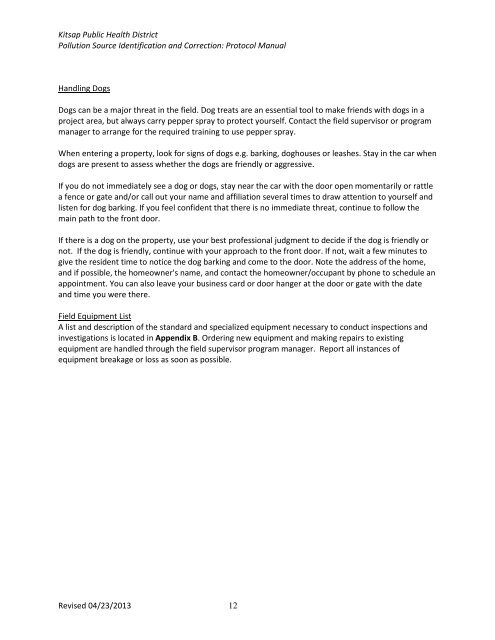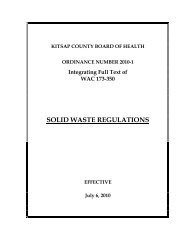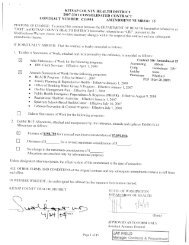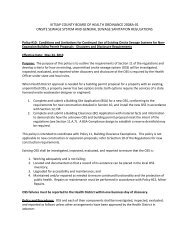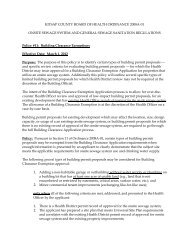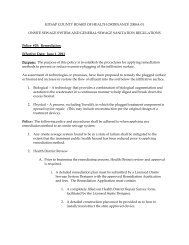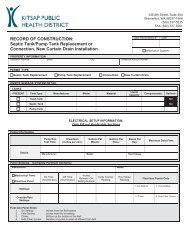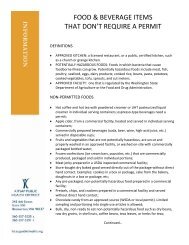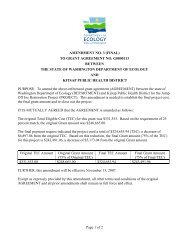(PIC) Protocol Manual - Kitsap Public Health District
(PIC) Protocol Manual - Kitsap Public Health District
(PIC) Protocol Manual - Kitsap Public Health District
You also want an ePaper? Increase the reach of your titles
YUMPU automatically turns print PDFs into web optimized ePapers that Google loves.
<strong>Kitsap</strong> <strong>Public</strong> <strong>Health</strong> <strong>District</strong><br />
Pollution Source Identification and Correction: <strong>Protocol</strong> <strong>Manual</strong><br />
Handling Dogs<br />
Dogs can be a major threat in the field. Dog treats are an essential tool to make friends with dogs in a<br />
project area, but always carry pepper spray to protect yourself. Contact the field supervisor or program<br />
manager to arrange for the required training to use pepper spray.<br />
When entering a property, look for signs of dogs e.g. barking, doghouses or leashes. Stay in the car when<br />
dogs are present to assess whether the dogs are friendly or aggressive.<br />
If you do not immediately see a dog or dogs, stay near the car with the door open momentarily or rattle<br />
a fence or gate and/or call out your name and affiliation several times to draw attention to yourself and<br />
listen for dog barking. If you feel confident that there is no immediate threat, continue to follow the<br />
main path to the front door.<br />
If there is a dog on the property, use your best professional judgment to decide if the dog is friendly or<br />
not. If the dog is friendly, continue with your approach to the front door. If not, wait a few minutes to<br />
give the resident time to notice the dog barking and come to the door. Note the address of the home,<br />
and if possible, the homeowner's name, and contact the homeowner/occupant by phone to schedule an<br />
appointment. You can also leave your business card or door hanger at the door or gate with the date<br />
and time you were there.<br />
Field Equipment List<br />
A list and description of the standard and specialized equipment necessary to conduct inspections and<br />
investigations is located in Appendix B. Ordering new equipment and making repairs to existing<br />
equipment are handled through the field supervisor program manager. Report all instances of<br />
equipment breakage or loss as soon as possible.<br />
Revised 04/23/2013 12


